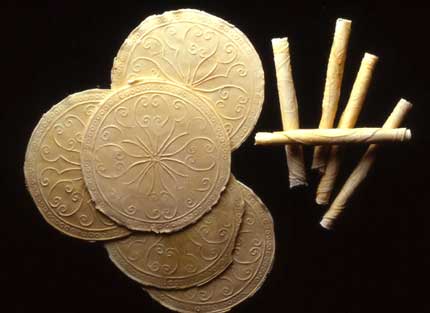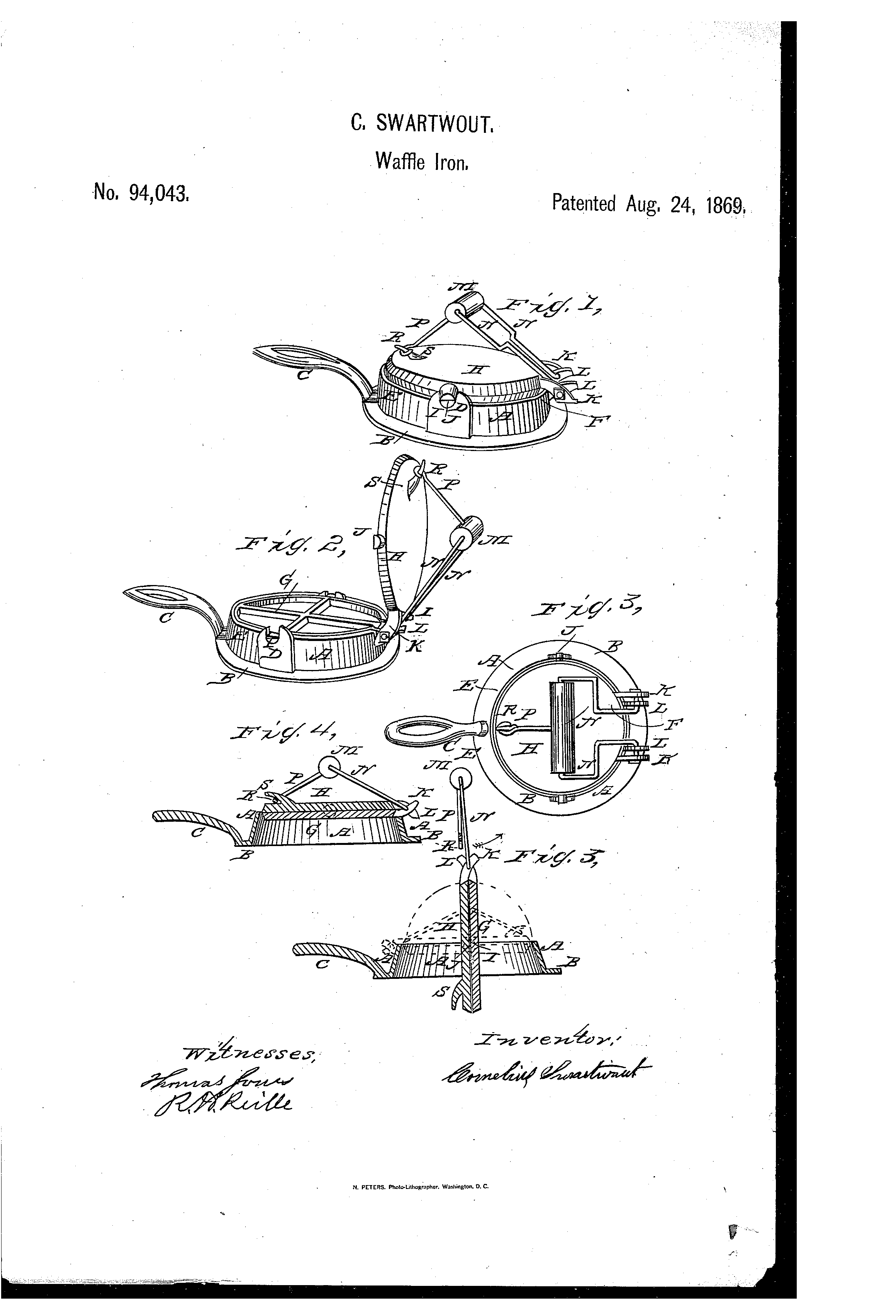Hey food buffs! Join the waffle frolic! Let's learn about waffles!!!
Waffles are made from a batter, including flour, butter, sugar, eggs, water or milk, and leavening. And this batter is pressed and cooked between two hot plates with some kind of design on it.
The pattern on the waffle, in my opinion, is essential to the waffle. You see, some people claim that a crude ancestor to the waffle existed all the way back in the Neolithic Age. This is because a mummified man from around 3200 BCE was discovered at the Italian-Austrian border and he was analyzed. Otzi the Iceman is said to have eaten something similar to a pancake. But pancakes are flat! So we don’t consider the Neolithic Age the beginning of waffles.
Fast forward to ancient Greece. The ancient Greeks also made a flat cake [obelios]. These were slightly closer to waffles, as they were cooked simultaneously on both sides using 2 metal plates, which is the way waffle irons work.
In the Middle Ages in Europe, the Catholic Church made unleavened wafers. These were pressed with images of religious icons and were often served at the end of meals as a symbolic blessing. Wafers could also be eaten during religious fasting, because they contained no animal fats, eggs, or dairy products. This made them very popular. This popularity lead to wafers becoming not just a food consumed for religious purposes, but also as a regular dessert food.

During the 1200s, a secular wafer, untied from religion, emerged in Europe. These wafers were made from leavened batter. By the way, a leavening agent is any substance that causes a foaming action that adds bubbles into the batter, making it lighter and softer. So these wafers were starting to look more like the modern day waffle. Bakeries started making the wafers bigger and more elaborate, really going in the opposite direction of the original humble wafer. And they began using rich ingredients like eggs, and cream. Also at this time, these wafers started to be decorated with more than just religious symbols. The wafers, and the waffles that would come after them, were made by heating two iron plates, which were hinged together, with the ingredients in the middle. Before, the irons were often designed so that the wafers came out imprinted with a religious symbol. But with wafers becoming more secular, the designs that were imprinted started to range, from landscape images, to coats-of-arms and many more. Soon the waffle irons that made the honeycomb pattern emerged. (Sidenote: The honeycomb pattern may be where waffles got their name from, as the Old German word "Wafel" is related to a word that can mean “honeycomb.”) Perhaps as a way to make more waffles on a single surface area, some waffle makers began making rectangular waffles on rectangular waffle irons, creating a grid pattern. Pretty soon, waffles were a well-established dessert in Europe.
Waffle recipes and waffle irons came to America in 1620 with Dutch pilgrims arriving on the Mayflower. These Dutch colonists living on the East Coast of North America, including the area that is now New York, customarily ate their “wafels” in the afternoon with tea and chocolate. But while Dutch colonists were eating waffles in America, the rest of the population wasn’t as familiar with waffles. Indeed, it wouldn’t be until 1735 that the English term “waffle”, spelled “w-a-f-f-l-e”, instead of the Dutch version “w-a-f-e-l” was first seen in print.
Many sources claim that Thomas Jefferson played a big role in popularizing the waffle - probably because it makes a good story. What we do know is that Jefferson brought back 4 waffle irons from France in 1789. Supposedly, this sparked the fad for waffle parties when he returned to the United States. Yes...waffle parties - that was a thing. They were known as “Wafel Frolics”. They’re exactly what the name implies - you go to a wafel frolic and eat waffles. Usually each guest prepares their own. Waffle parties persisted into the 19th century, where books instructing on how to entertain would include sections on waffle parties. People got creative, making invitations to waffle frolics look like waffles, right down to simulating the scorch marks of the waffle iron.

By the Civil War, waffles were available as a breakfast or supper food in most hotels, further increasing their popularity. In 1869 the first patent for a waffle iron was issued in the U.S. by Cornelius Swarthout. His design described a device including a handle and a clasp that allowed the iron to be flipped without risk of spillage or burns. The device was intended to be heated over a stove. Today, we celebrate National Waffle Day on the day Cornelius was granted his waffle iron patent - August 24th.
Waffle production continued to march on. In 1889 Pearl Milling Co. started selling the first prepared waffle mix. It was sold under a name that some of you food buffs might recognize, Aunt Jemima. Electric waffle irons followed after that, with General Electric introducing the first model in the early 1900s.
So what else contributed to the rise of waffles? We’ll give you a hint: Leggo my Eggo. In 1953, 3 brothers from San Jose, California, introduced their invention - the frozen waffle. Their names were Anthony, Samuel, and Frank Dorsa. At first, they called it the "froffle", which is a word that combines the words “frozen” and “waffle”. Then they renamed it “Eggo”. Some sources will tell you that the name change was because people started calling the froffles "eggos" because of their eggy taste, but it can’t be a coincidence that the Dorsa brothers had put out another product before froffles, called Eggo mayonnaise. Anyhow, froffles were officially renamed Eggos, and soon after, the company was acquired by The Kellogg Company, which famously advertised the frozen waffles with the slogan “L’eggo my eggo”.

